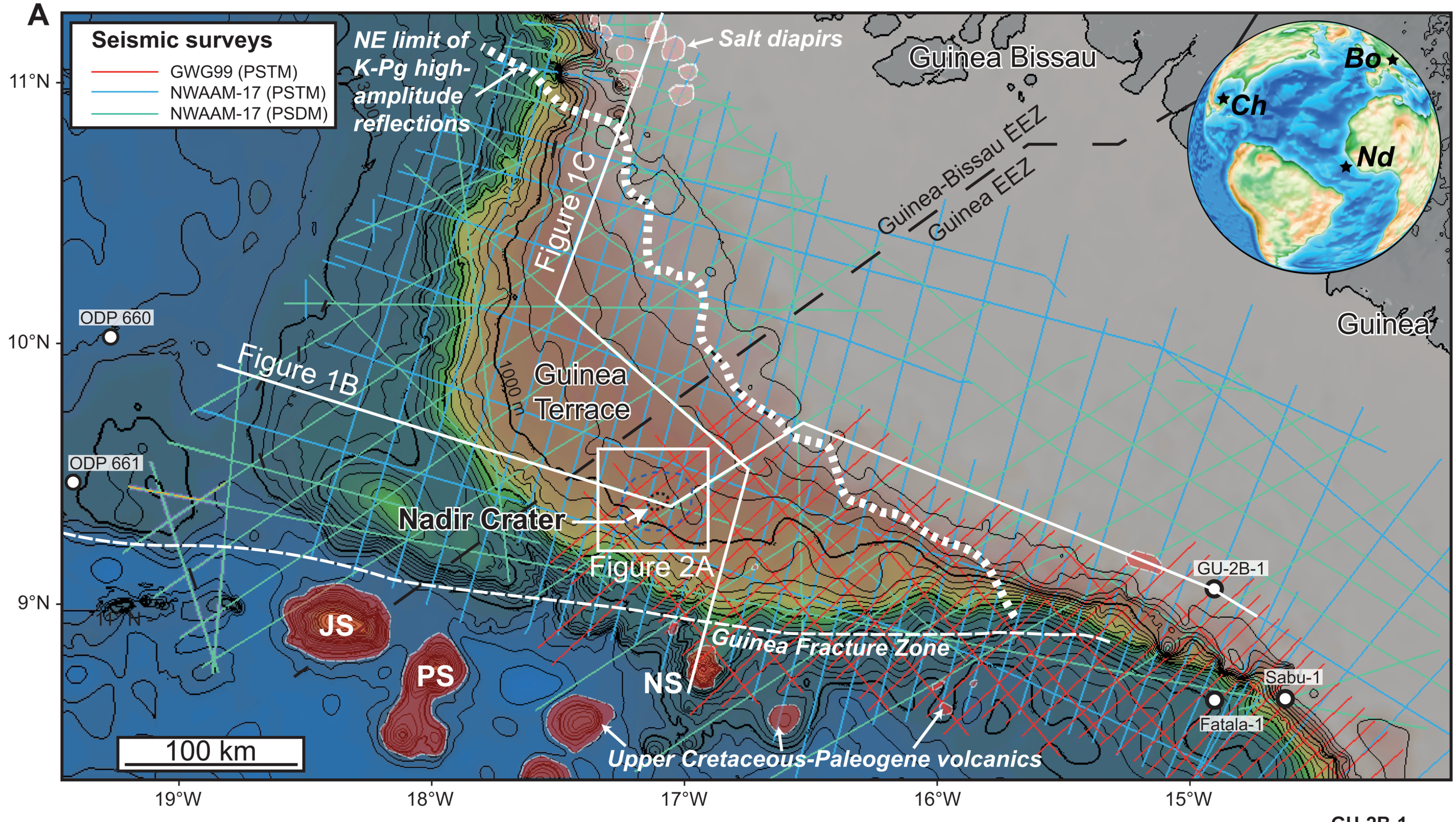A crater off the west coast of Africa is considered likely to be from an asteroid impact around the time of the much larger Chicxulub Crater, responsible for the extinction of the non-avian dinosaurs. The scientists who made the discovery acknowledge further confirmation is needed, but raise the possibility of a double-strike, caused by an asteroid that had previously split.
Fewer than 10 percent of the impact craters we know of are on the sea floor. More rapid recycling of oceanic crust explains part of this, but the main reason is we just haven’t looked that hard.
Seismic reflection studies of the Atlantic floor picked up a structure at least 8.5 kilometers (5.3 miles) wide buried beneath 300-400 meters (984-1,312 feet) of sediment. In the journal Science Advances, the crater’s discoverers make the case it is an impact crater that dates to within a million years – and possibly within a few minutes – of the end of the Cretaceous.
The newly discovered crater lies on the Guinea Plateau, and has been named Nadir after a seamount 100 kilometers (62 miles) to the south. Not all craters are from impacts from space. However, the authors show Nadir’s location, central peak and size-to-height ratio are not consistent with alternative explanations such as volcanic collapse or salt withdrawal.
The site of the Nadir crater off the coast of Guinea; Image CreditL Nicholson et al. Data courtesy of the Republic of Guinea and TGS.
Consequently, they argue the most likely explanation is an asteroid (or perhaps comet) around 400 meters (1,300 feet) across landing in 800-meter (2,625-foot) deep water.
We know the Earth suffers impacts of this size more than once every million years, but the timing is striking. Sedimentary depth places its age very close to that of Chicxulub.
The discovery was made almost by chance. Dr Uisdean Nicholson of Heriot-Watt University was doing a research project on seafloor spreading when he noticed something odd. “I’ve interpreted lots of seismic data in my time, but had never seen anything like this. Instead of the flat sedimentary sequences I was expecting on the plateau, I found an 8.5-kilometer depression under the seabed, with very unusual characteristics,” Nicholson said.
Drilling at the site could settle the question of whether Nadir is an impact crater, and add precision to its dating. In the meantime, the authors discuss the implications if their assessment is correct.
The impact; “Would have generated a tsunami over 3,000 feet high, as well as an earthquake of more than magnitude 6.5,” said Dr Veronica Bray of the University of Arizona in a statement. She added the impactor was probably similar in size to Bennu, which could one day hit the Earth.
The authors acknowledge it is possible the two impacts are sheer coincidence, unrelated objects striking close enough in time that we can’t separate them.
Alternatively, however, we might have been hit by a binary asteroid, perhaps formed through a previous collision with a smaller object or when a close encounter with a planet’s gravity split it in two. Such asteroids are common in space, but the paper notes only 2-4 percent of known impact craters are binary structures, although curiously the figure seems to be 14 percent on Venus.
A more complex scenario would be some major event in the asteroid belt affecting many space rocks so that many of them left stable orbits and entered the inner solar system. Most would have ended their days crashing into the Sun or an inner planet – if the numbers were sufficient, we might expect several to hit Earth over a million years or so. Perhaps some gave the dinosaurs a warning they were unable to heed or added an extra blow to the main impact’s few survivors. We know something similar happened during the Ordovician era.
“If we have found one ‘sibling’ to Chicxulub, it opens the question: Are there others?” Bray wondered.
Source Link: Newly Discovered Sea-Floor Crater Could Be Related To Chicxulub The Dinosaur Killer
